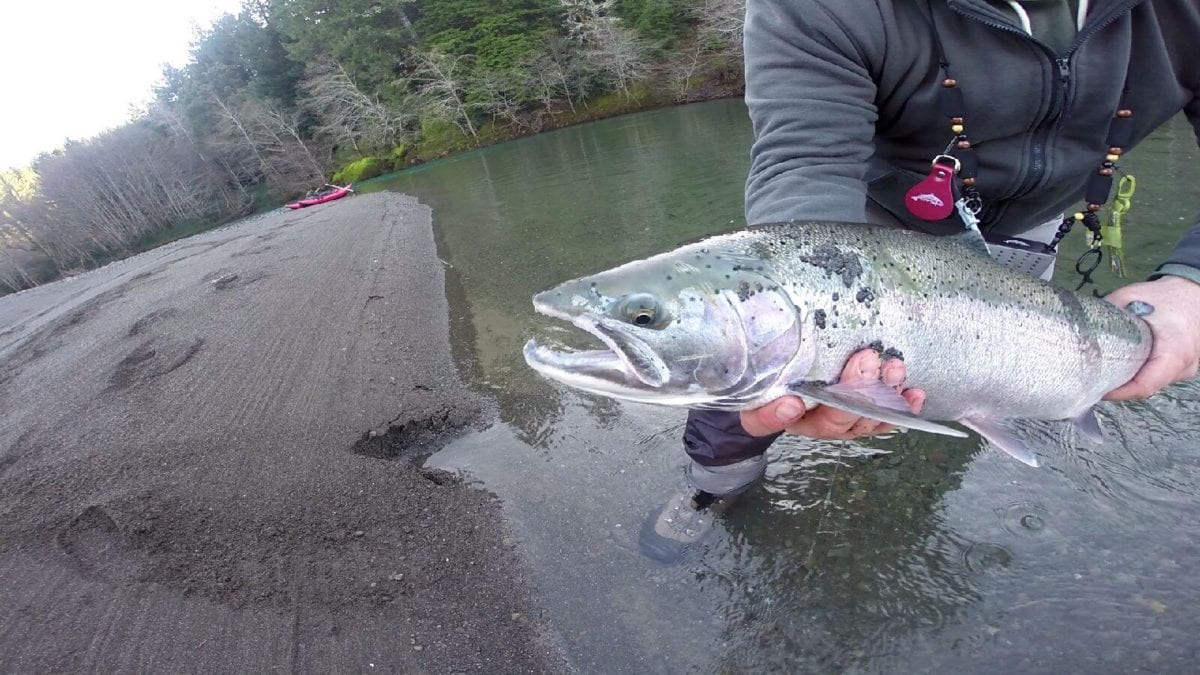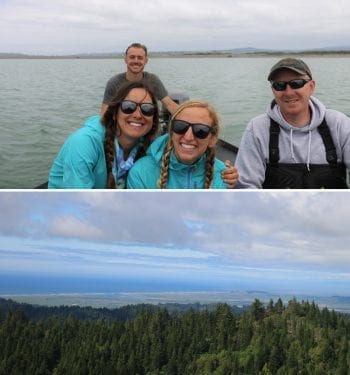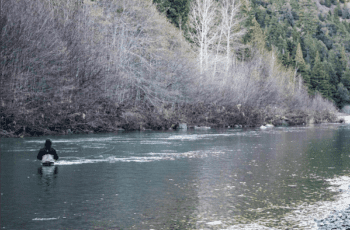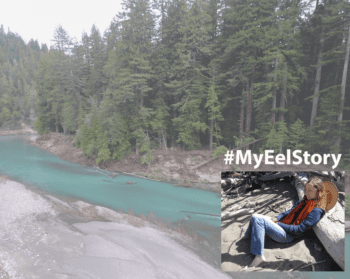The Eel River is staged for a comeback. And CalTrout is leading the way to accomplish this. We hope you enjoyed our five-part video series where we shared our headwaters-to-sea approach for returning the Eel River to its historic abundance. Our comprehensive plans include restoring the estuary, ensuring adequate flows for fish, removing barriers, and engaging in the Potter Valley Project dam relicensing process. We’re thrilled that our video series garnered so much attention. Check them out on CalTrout’s vimeo page if you missed them.
As part of our campaign, we were curious to hear from our supporters about their time spent on the Eel River. We know it’s a special place for many people, anglers, wildlife enthusiasts, hikers, and families looking for fun on the river. After hearing our story about the Eel, we asked folks to submit their own. Here are some of our favorite submissions. Enjoy! (To learn more about our Eel River project go to caltrout.org/eel)
Last summer my friends and I walked the entire coastline of California from Oregon to Mexico on the California Coastal Trail. In the rugged and wild north coast, we had to figure out how to cross many river mouths, including the place where the Eel River meets the sea. Routing inland to the road bridge would have added dozens of miles to our journey, so we were really hoping to find another way across. Luckily, Jens and Tyrone of Mad River Tackle offered to take us across in their boat. We marveled at the clear water and the seals hauling out on the shore.
The next day, we made the strenuous climb up Wildcat ridge to avoid the treacherous coastline at False Cape. We were rewarded with sweeping views to the north, over forested ridges and down to the bright blue mouth of the Eel River.
My Father grew up under the shadow of the Redwood giants and fished the beautiful veins of life that coursed between them. He himself has seen the abundance that once was, and always says, “If I knew then; if we knew then, what we do now”. He says, “it didn’t always used to be this way.” To me, abundance has a negative connotation. Growing up and being attached to the outdoors and fly fishing, everything in abundance I’ve known was taken advantage of, farmed to near extinction, or reaped for all its worth and left to die. The only abundance I’ve known are from the stories my Father has told me.
But, there is hope.
We can still connect to the wild, and I can be a part of something that is free and abundant once more. There is hope on the horizon and a wonderful group of people working to protect and care for the Eel.
I look at #myeelstory in this way; before I was born part of the story was already open and inked, but there is the rest of the story waiting to be continued. We are at the point of knowing what we know now. The rest of #myeelstory has yet to be written and if I want the next chapter to be better than the last, responsibility falls on me and my fellow anglers.
All I know now is fishing for one of the toughest fish to catch, the hardest way is something I love to do. There’s something special about swinging a fly for Steelhead and Salmon under the shadows of the same majestic trees my Father grew up underneath. I’m just need to be in the right place at the right time when the children’s children, of the fish my Father used to catch, happens to be swimming by.
One day, maybe I’ll be able to tell my own child abundance is a special thing, and it didn’t always used to be this way. It’s up to you and I to protect and cherish abundance. That way, your children and their children can swing a fly under the shadows of Redwoods my Father once did; through a river with abundant, wild, and free runs.
Born and raised in Laytonville, my earliest memories of the Eel were trips over Dos Rios Road in search of deep blue pools of cold water to escape the summer heat. Small sandy beaches surrounded by plenty of rocks to jump from, it was by far one of my favorite summer activities. Little did I know that I was in the beginning stages of what would become a long, and meaningful relationship with what I call my home river. Although I didn’t see the Eel under the same light as I do now, there was an unspoken respect and pride I had for it. I now realize that, although unforeseen in early childhood, those early memories would blossom into great respect and admiration for this one-of-a-kind river. My views of the river during childhood were somewhat naive. I viewed it as an untouched wilderness, unaware of its history. I didn’t think much of its future, just as I didn’t think much of its past, it was just there and what it was. Until I was ten years old, we lived on the banks of Ten Mile creek. In winter months, no more than 200 feet from the house, we would watch salmon that seemed as big as ourselves in search of their spawning grounds. Seeing fish that size, that close, was seared into my memory.
Being somewhat distracted in high school, the Eel still served as a place to have fun. Every now and then the trout rod would be taken along. Having spent plenty of time fishing trout in other places, I treated the Eel like a summer trout stream, not with any real expectations but because it seemed like the right thing to do. River = fish. At this point I can’t say I was an informed fisherman, just a kid with a fishing pole. There wasn’t much talk around this time about fishing the eel , it seemed like it was viewed as damaged, or broken. It wasn’t until I headed northbound for college at College of The Redwoods (2003) that I started to learn about the Eel, among other local rivers like the Mattole, and Mad. My perspective started to radically change from blissfully ignorant to concern. This also coincided with my interest to want to do more salmon/steelhead fishing. As my knowledge for the Eel River’s history of abuse grew, my appreciation for it grew as well. Having spent so much time with the Eel growing up, I wondered why there wasn’t more talk about it. Maybe there was and I wasn’t hearing it, or maybe people’s passion for it was dwindling from years of hardship. Nonetheless, my journey was just taking off. After college I spent a lot of time fishing. Mainly after trout with a 5 weight fly rod, I traveled in search of cutthroats in the Bitterroot, and Flathead Rivers of Montana. Also stopping in to fish the Salmon River in Idaho. I traveled north to Washington’s Cowlits River for Steelhead. I made countless trips to more local streams like Hat Creek, Carson River, Sacramento River, and the Trinity River searching for Trout. With each trip my thirst to explore grew. Something was growing inside of me that craved more trees, mountains, wildlife, and the best way to bridge the gap between myself and nature. It’s as if growing up in the beauty of Mendocino county, inspired my hunger to find other beautiful, and wild places. A feeling I’ve come to really enjoy as well, is coming home. Each time with more love, and appreciation for how special places like the Eel River are. Through things like backpacking and fishing, I’ve found a way to bridge that gap. Lately I’ve spent a lot of time supporting and fishing the Eel.
The idea of the Eel returning to abundance is exciting, and I have so much respect for people fighting for the Eel. I’ve talked to old timers who reminisce on the Eel River’s glory days. They talk about a river that I’ve never seen. My generation has built its respect on a river with far less fish. But instead of complaining I get more ambitious, more devoted to the chase. Thank you CalTrout!
From Dan Casas:
Following in the footsteps of my grandparents, and their parents before them, I savor the Eel River and our family’s history with that river and others in the Six Rivers National Forest. My grandmother, Esther, was born and raised on the Eel River at Camp Grant, just over the hill from South Fork, appropriately named as it is located on the South Fork Eel River. My great grandfather lost his ranch in the big flood of ’64, although his son stayed and farmed his ranch along the South Fork. I recently talked about the Eel in the 60s with an uncle who taught at a local school. He said that he would stop on the way home from school and catch a steelhead trout or salmon within 5-10 minutes. Those were the days! I make at least one or two trips from the San Francisco Bay Area to the Eel River every winter in search of the elusive steelhead, camping among the giant redwoods that inundate the landscape along the Eel. Although not familiar with all places on Earth, I suspect that the forks of the Eel River and the watershed landscape are unique and as beautiful as it gets. The more help I can give to turn back the clock and make the Eel closer to what it used to be, with salmon and steelhead thriving, the better.
Born and raised in San Francisco I’ve always felt like a city girl with a rural soul. My hippy parents had bought some land with friends in Willits in the 60’s. As a kid we would drive up along Highway 101 from San Francisco to Willits regularly. I would always get excited when we hit the Russian River along the way. But it was when I was in high school that we made the trip up that way with a purpose. We headed up to Fortuna for Redwoodstock – the final protest and celebration of the end of Redwood Summer – a peaceful anti-logging action. A couple years later I was driving that route on my own back and forth from my home in SF to College up in Arcata at Humboldt State. Stopping along the Eel River and resting in the deep shade of the Redwoods, or dipping my feet in the cold waters, has always been nourishment and inspiration for my spirit. And since then I have driven across the country many times and still consider that route on 101 along the Eel River to be the most beautiful drive of them all. I am still not settled, currently living in Novato, CA. But I would not be surprised if I found myself someday planting my roots somewhere close to the Eel River. It seems to be a part of my personal topography.









